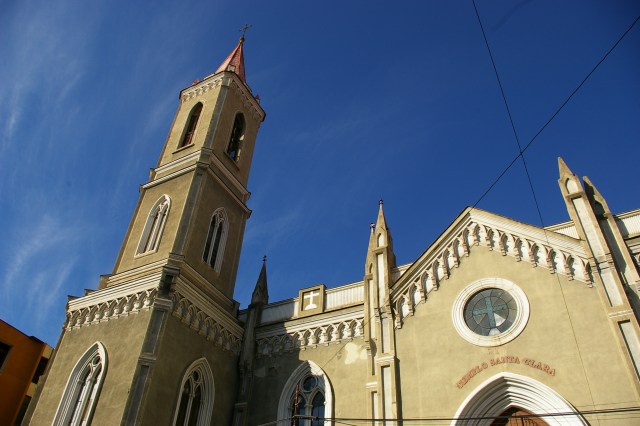Located in the center of Bolivia, Cochabamba is a wonderful city to start an adventure in this diverse country. Like many cities in South America, Cochabamba has a history that was dominated by the Spanish and many of the buildings and churches date back to 1500’s. In addition to the city itself, Cochabamba is also an excellent location to launch several different short trips, including going to Carrasco National Park. Cochabamba is considered the gastronomical heart of Bolivia as well and was where we had our first taste of Pique Macho.





There are several churches in Cochabamba, including the Metropolitan Cathedral, Iglesia Santa Teresa with its accompanying convent, and the colorful Templo de la Recoleta. The Santa Teresa Convent has been converted into a museum and is definitely worth taking the time to tour. In addition the churches, another noteworthy site to visit is the Palacio Portales, which is a mansion that was built by a local tin baron who actually never lived in the beautiful building. The palace also offers tours in both English and Spanish and is worth spending the time to visit and to walk around the beautiful garden.





One of the things that makes Cochabamba such a wonderful city to visit is that the temperatures remain spring-like all year long. There are several parks and squares in Cochabamba with beautiful flowers that take advantage of the moderate temperatures. Families come out to these common areas to play, relax, and walk through the open air markets that are located nearby. As is typical, these parks and squares feature fountains and monuments at their centers. To get better views of the city, you can take the cable car to top of San Pedro Hill where the Cristo de la Concordia overlooks the city.





One of the day trips that we took out of Cochabamba was to visit the ancient ruins at Incallajta. Walking around these amazing ruins was truly amazing, especially due to the fact that we were able to walk all around this historic site without any other visitors. Making our day even more interesting was the discovery of an old Spanish church on the road to Incallajta that our guide had never seen before. At the end of the day, we went to the “ghost village” of Chimboata where we saw how truly difficult life can be for the rural people of Bolivia.





We also took a two-day trip into the Amazon Jungle where we stayed at an ecolodge and had our first taste of the rainforest. We took what was called a canopy tour, which was really an afternoon of ziplining from the tops of trees across rivers and canyons. The following day we took a tour in Carrasco National Park that had us hiking through the jungle, climbing into caves with rare birds and bats, and seeing cocoa fields that were intruding onto the park lands. Driving from Cochabamba to our ecolodge was probably as interesting of an experience as seeing the park itself and would prepare us for our trip down “Death Road” later during our trip.





With so many opportunities for adventure, Cochabamba is a wonderful city to visit in the beautiful country of Bolivia. The people are extremely friendly, although you will not find too many people who speak anything other than Spanish or Quechua. We spent about five days in Cochabamba, which was about the minimum amount of time if you want to take advantage of doing some day trips from the city.






























